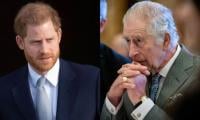Rupee may stay firm
The rupee slightly gained during the outgoing week due to steady import payments, improvement in economic indicators and positive sentiment.
The local unit rose 10 paisas against the dollar in the interbank market.
On Monday, the currency closed at 155 against the greenback, compared with the previous closing of 154.96.
The rupee was range-bound, trading in the band of 154.90 and 154.94 in the remaining four sessions.
In the open market, the local currency lost 30 paisas to close at 155 to the dollar in the outgoing week.
Dealers said the rupee is likely to stay range-bound in the coming week because of strong foreign exchange reserves positions, healthy foreign inflows and improvement in the balance of payments.
The completion of first review of the country’s economic performance by the International Monetary Fund (IMF) also boosted the market sentiment.
A persistent increase in the central bank’s foreign currency reserves is expected to cushion the external current account.
Analysts expect the current account deficit to be in the range of $6 billion to $6.5 billion in the current fiscal year of 2019/20.
The country’s current account deficit fell 73 percent to $1.821 billion in July-November FY20.
The foreign exchange reserves held by the State Bank of Pakistan (SBP) jumped to $10.892 billion as of December 13 from $9.233 billion a week ago due to multilateral and other official inflows.
Further, the decline in the swaps and forward liabilities led to the rise in the State Bank’s reserves.
The Executive Board of the International Monetary Fund (IMF) approved the second tranche of $452.4 million for Pakistan under the extended fund facility.
“Pakistan’s programme is on track and has started to bear fruits. However, risks remain elevated. Strong ownership and steadfast reform implementation are critical to entrench macroeconomic stability and support robust and balanced growth,” the IMF said in a statement.
“The flexible, market-determined exchange rate remains essential to cushion the economy against external shocks and rebuild reserves buffer. The current monetary stance is appropriately tight and should only be eased once disinflation is firmly entrenched.”
-
 Oilers Vs Blackhawks Recap: McDavid, Bouchard Lead Edmonton
Oilers Vs Blackhawks Recap: McDavid, Bouchard Lead Edmonton -
 Why Jennifer Garner, Jennifer Lopez Didn't Pose Together At Golden Globes
Why Jennifer Garner, Jennifer Lopez Didn't Pose Together At Golden Globes -
 Apple Turns To Google’s Gemini To Deliver Long-awaited Siri Revamp In 2026
Apple Turns To Google’s Gemini To Deliver Long-awaited Siri Revamp In 2026 -
 Nicola Peltz Lifts The Lid On New Twist In Beckham Feud
Nicola Peltz Lifts The Lid On New Twist In Beckham Feud -
 Rihanna Responds To The Possibility Of Having Another Child
Rihanna Responds To The Possibility Of Having Another Child -
 Brooks Nader Opens Up About Dissolving Her Lip Filler
Brooks Nader Opens Up About Dissolving Her Lip Filler -
 Meghan Markle Drops Cryptic 'save The Date' Hint For New As Ever Launch
Meghan Markle Drops Cryptic 'save The Date' Hint For New As Ever Launch -
 King Charles Celebrated In Uganda As Environmental Legacy Takes Center Stage
King Charles Celebrated In Uganda As Environmental Legacy Takes Center Stage -
 Louis Tomlinson Knew Harry Styles Was Destined To 'take Over'
Louis Tomlinson Knew Harry Styles Was Destined To 'take Over' -
 Prince William Brings In Top Crisis Strategist As Royal Challenges Loom: Source
Prince William Brings In Top Crisis Strategist As Royal Challenges Loom: Source -
 Ben Affleck Jokes Tax Shock After Good Will Hunting Payday
Ben Affleck Jokes Tax Shock After Good Will Hunting Payday -
 King Charles' Trust Marks Half-century With Hopeful Message
King Charles' Trust Marks Half-century With Hopeful Message -
 Matt Damon Gets Candid About Standing By Ben Affleck During Tough Times
Matt Damon Gets Candid About Standing By Ben Affleck During Tough Times -
 Bebe Rexha Jokes About Asking Taylor Swift To Manage Her Career Amid Label Exit
Bebe Rexha Jokes About Asking Taylor Swift To Manage Her Career Amid Label Exit -
 How Prince Harry’s Security Fight Could Change His Royal Future? Source
How Prince Harry’s Security Fight Could Change His Royal Future? Source -
 Matthew McConaughey Finds It Difficult To Sit Through His Own Movies
Matthew McConaughey Finds It Difficult To Sit Through His Own Movies



